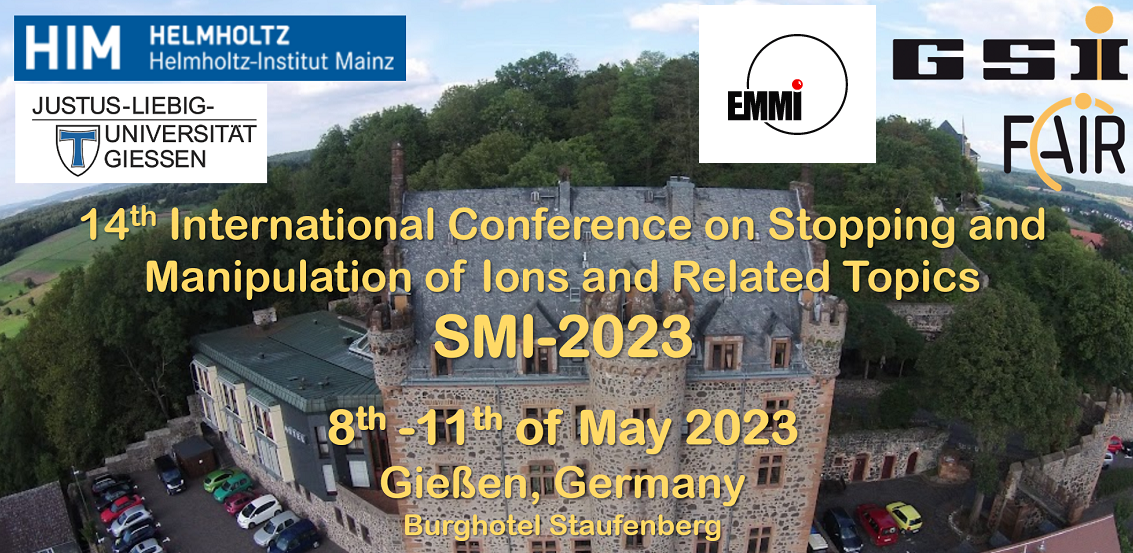Sprecher
Beschreibung
Daler Amanbayev1, S. Ayet2, D. Balabanski3, S. Beck1, J. Bergmann1, P. Constantin3, T. Dickel1,2, H. Geissel1,2, T. Grahn4,5, L. Gröf1, E. Haettner2, M. Harakeh6, C. Hornung1, N. Kalantar-Nayestanaki6, G. Kripko-Koncz1, I. Mardor7,8, I. Miskun1, A. Mollaebrahimi1,10, I. Moore4,5, W. R. Plaß1,2, I. Pohjalainen4, S. Purushothaman2, M. P. Reiter9, A. Rotaru3, C. Scheidenberger1,2, A. Spataru3, A. State3, A. Zadvornaya1.
1 - Justus-Liebig-Universität Gießen, 2 - GSI Helmholzzentrum für Schwerionenforschung, Darmstadt, Germany, 3 - IFIN-HH/ELI-NP, Magurele, Romania, 4 - University of Jyväskylä, Finland, 5 - Helsinki Institute of Physics, Helsinki, Finland, 6 - ESRIG, University of Groningen, The Netherlands, 7 - TAU, Tel-Aviv, Israel, 8 - Soreq NRC, Yavne, Israel, 9 - University of Edinburgh, UK, 10 - TRIUMF, Vancouver, British Columbia, Canada.
A cryogenic stopping cell (CSC) for the Super-FRS [1] at FAIR has been developed to enable fast and efficient thermalization of intense beams of short-lived nuclides produced at relativistic energies of up to 1.5 GeV/u.
It features a novel high areal density two-stage orthogonal extraction (HADO-CSC) concept [2] that allows achieving the unprecedented design performance parameters required to take full advantage of the Super-FRS. Combined with the multiple-reflection time-of-flight mass-spectrometer (MR-TOF-MS) [3], the CSC is part of the Early and First-Science programs of FAIR as a setup for the measurement of beta-delayed neutron-branching ratios, high-accuracy mass measurements and reaction studies. Furthermore, it will be a key device to enable the scientific programs of MATS [4], LaSpec [5] and the Super-FRS Experiment Collaboration [6] at the low-energy branch of the Super-FRS.
This contribution presents the status of the project and technical developments including helium recovery unit (HRU) and test chamber for the RF carpets. Furthermore, it presents recent experimental results obtained with the prototype CSC [7] at the FRS Ion Catcher [8] which validate the selected design concepts.
References:
[1] H. Geissel et al., NIM B 204 (2003) 71
[2] T. Dickel et al., NIM B 376 (2016) 216
[3] W.R. Plaß et al., Phys. Scr. 014069 (2015) T166
[4] D. Rodriguez et al., Int. J. Mass Spectrom. 349 (2013) 255
[5] W. Nörtershäuser et al., Hyperfine Interact. 171 (2006) 149
[6] J. Äystö et al., NIM B 376 (2016) 111
[7] I. Miskun, PhD Thesis, JLU Gießen (2019)
[8] W. R. Plaß et al., Hyperfine Interact 240 (2019) 73

